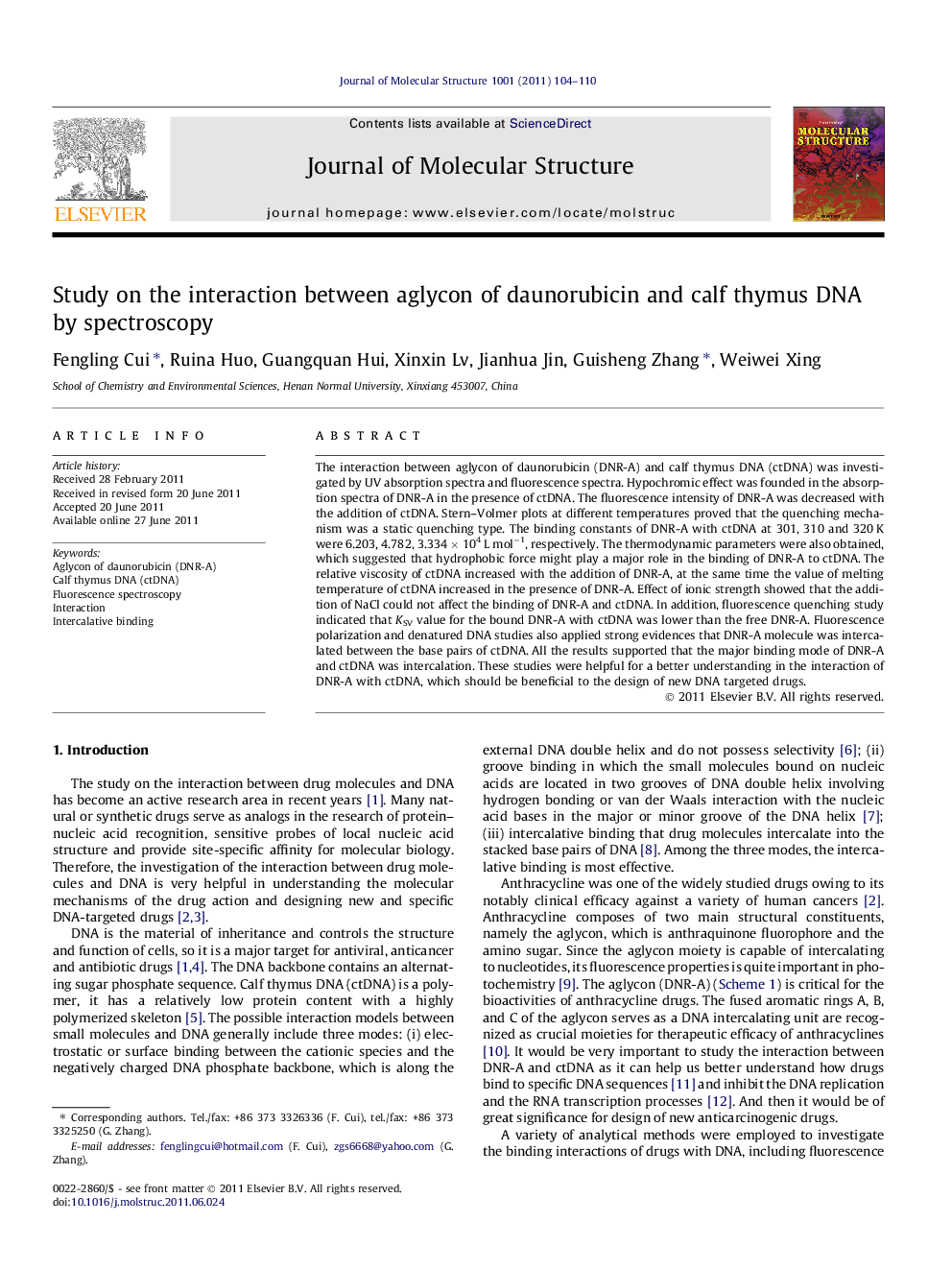| کد مقاله | کد نشریه | سال انتشار | مقاله انگلیسی | نسخه تمام متن |
|---|---|---|---|---|
| 1403837 | 1501813 | 2011 | 7 صفحه PDF | دانلود رایگان |

The interaction between aglycon of daunorubicin (DNR-A) and calf thymus DNA (ctDNA) was investigated by UV absorption spectra and fluorescence spectra. Hypochromic effect was founded in the absorption spectra of DNR-A in the presence of ctDNA. The fluorescence intensity of DNR-A was decreased with the addition of ctDNA. Stern–Volmer plots at different temperatures proved that the quenching mechanism was a static quenching type. The binding constants of DNR-A with ctDNA at 301, 310 and 320 K were 6.203, 4.782, 3.334 × 104 L mol−1, respectively. The thermodynamic parameters were also obtained, which suggested that hydrophobic force might play a major role in the binding of DNR-A to ctDNA. The relative viscosity of ctDNA increased with the addition of DNR-A, at the same time the value of melting temperature of ctDNA increased in the presence of DNR-A. Effect of ionic strength showed that the addition of NaCl could not affect the binding of DNR-A and ctDNA. In addition, fluorescence quenching study indicated that KSV value for the bound DNR-A with ctDNA was lower than the free DNR-A. Fluorescence polarization and denatured DNA studies also applied strong evidences that DNR-A molecule was intercalated between the base pairs of ctDNA. All the results supported that the major binding mode of DNR-A and ctDNA was intercalation. These studies were helpful for a better understanding in the interaction of DNR-A with ctDNA, which should be beneficial to the design of new DNA targeted drugs.
► Hypochromic effect was founded in the absorption spectra.
► Fluorescence intensity of aglycon of daunorubicin was decreased.
► The major binding mode was intercalation.
► The quenching mechanism was a static quenching type.
► Hydrophobic force may play a major role.
Journal: Journal of Molecular Structure - Volume 1001, Issues 1–3, 24 August 2011, Pages 104–110